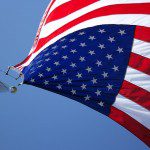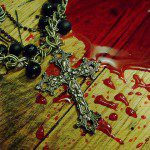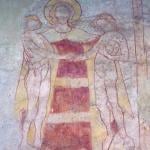Tell me that you blogwatch,
Sort out this confusion…
MyCatholic.com–nifty thing you can use to follow the liturgical calendar, Catholic news, blogs, and much more.
The Bible Literacy Project, for which I worked briefly, has released their textbook for a Bible course suitable for public schools. Some comments:
“The volume is well done. …I was quite taken with the abundance of supplementary materials included in the text–the artwork (highly variegated and well-chosen), the insets about the Bible in subsequent literature, the Bible in political life, etc. All this, I think is likely to help students see concretely how the Bible is not just a set of ancient documents or something confined to pulpit and Sunday school, but a series of powerful writings that have had, and continue to have, profound effects on a whole range of our cultural institutions and on the way we think about the world.”
–Robert Alter, Ph.D., professor of Hebrew and comparative literature, University of California at Berkeley“This text is a feast for the mind, the eye, and the heart. Instructive, beautiful, and engaging, it promises to keep THE seminal works of the Western tradition alive for generations of young people.”
–Amy A. Kass, Ph.D., senior lecturer in the humanities at the University of Chicago and senior fellow at the Hudson Institute“Let me say how impressed I am by this … It is clear that much hard work and good scholarship have gone into the text. The instructional design is excellent. This promises to be an outstanding resource for public schools.”
–Charles C. Haynes, Ph.D., senior scholar, First Amendment Center, Arlington, Virginia“The influence of the Bible on Western culture in every respect–arts and literature, politics and justice–is immeasurable. Thanks to this volume, students can begin to get some sense of the range of that influence. Despite the sensitivity of the subject matter, this volume succeeds in being admirably balanced and fair, and yet accords full respect to sincere religious faith. Too long the Bible has been selectively ignored by educators afraid of giving offense. This volume makes it possible to once again bring into the classroom the book which has had the single greatest impact on Western civilization.”
–Frederica Mathewes-Green, M.A., author and commentator“It is, on the whole, an excellent job. It will serve as an excellent and even-handed introduction to the Bible. Without question, it can serve as the basis for a constitutional course about the Bible in the Nation’s public schools. It is therefore a signal achievement.”
–Marc D. Stern, general counsel, American Jewish Congress“This text provides an extraordinarily helpful background–the Bible’s impact on literature, the arts, and life. If anyone is looking for a comprehensive academic understanding of the roots of modern civilization, this book is an indispensable resource.”
–Chuck Colson, author and Founder, Prison Fellowship“To be considered fully literate in the arts and letters of Western culture, one needs to know the Hebrew Bible, one of the cornerstones of this culture. This volume provides students with the necessary tools to attain such literacy.”
–Ellen Frankel, Ph.D., CEO and editor-in-chief of The Jewish Publication Society
lots more here!
And Michael Baldwin, a fellow Yalien life form and former contributor to Yale’s Finest Publication, tells me about his new project, CommonCensus, which sounds interesting:
It recognizes the fact that the political borders of the US today often have very little to do with the actual distribution of people in the country, and how “undemocratic” this can be viewed as. However, until now, no one has been able to put together a map of the US made “by the people, for the people.”
This new website relies on tallying the voting results from hundreds of thousands of participants to “redraw” the map of the United States. Once it has this participation level, it will show exactly how people within the US segment themselves.
The maps will answer questions like, where exactly is the line between people who see themselves as part of NYC, and those who see themselves as part of Upstate NY? If it were up to the people and the places they identify with, how many states would the US have and what would they look like? Do the people within the same county feel like their local government represents them, or do they feel like they should belong to another area?











